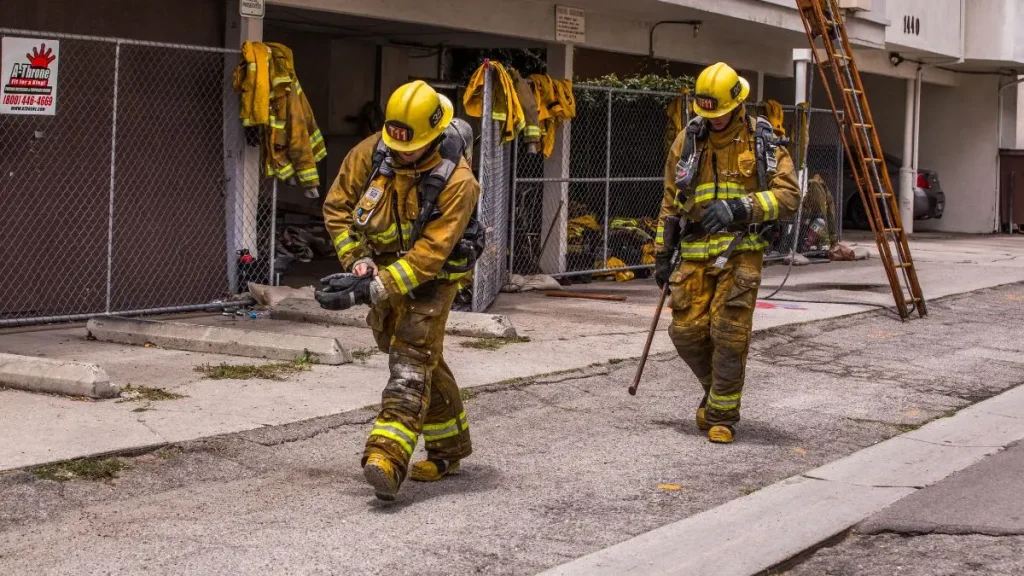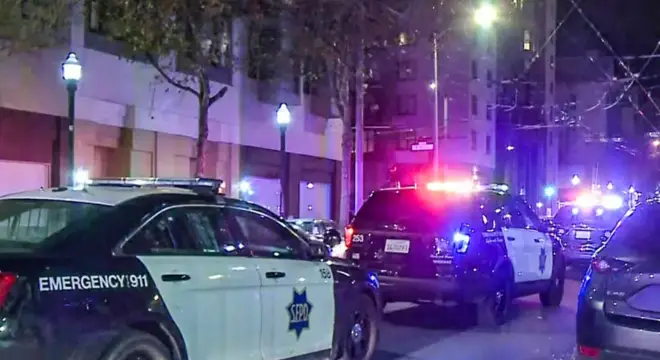Family Displaced After Fire Damages Glastonbury Home
When I first heard about the Glastonbury house fire on Cedar Ridge Drive, it wasn’t just another news update—it was a quiet shock that hit close to home. Around 3:10 p.m. on Monday, firefighters were called to a blaze that had already started spreading fast. By the time they arrived, thick smoke was rolling out of the garage and curling into the fall sky.
You can almost picture the chaos: flashing lights, the sound of pumps pulling water, neighbors watching from a distance, hoping everyone was safe. Within minutes, backup crews from nearby towns joined in. It took nearly an hour to bring the fire under control, but by then, the damage was done—the family’s home was uninhabitable.
No one was injured, and that’s something to be grateful for. Still, losing your home in one afternoon isn’t just about walls and furniture. It’s years of memories, routines, and a sense of safety gone up in smoke. The Red Cross stepped in to help the displaced family, offering temporary relief in a moment that must have felt unreal.
Stories like this always make me pause. What would you grab first if your home caught fire? What would you wish you’d done differently? Think about it for a second—it’s not a headline until it happens to someone you know.
How the Blaze Spread — and Why It Was So Intense

As per NBC Connecticut, the Glastonbury fire began quietly—most likely in the garage underneath the house. That one small space, often packed with tools, wires, and everyday storage, turned into the ignition point for an entire home. The fire spread upward fast, feeding on open beams and stored materials before anyone could react.
Garage fires are some of the hardest to contain because they burn hot and fast. The structure above them traps the heat, and once flames break through, they move unpredictably. Investigators haven’t confirmed the exact cause yet, but early reports suggest an electrical or mechanical issue might have been involved.
It’s a sobering reminder of how vulnerable even the safest homes can be. You and I store all kinds of flammable things in garages—paint cans, chargers, propane tanks—without thinking twice. It only takes one spark, one wire, one moment of bad timing.
If nothing else, this fire teaches us to take those quiet spaces seriously. When was the last time you checked your garage wiring or smoke alarm down there?
Rapid Response: Firefighters From Across Towns Step In
According to the Glastonbury Fire Department’s official Facebook update, crews arrived to find the two-story home “well involved on arrival,” meaning flames had already taken over large portions of the structure.
The department immediately called for mutual aid from surrounding towns—Manchester, Hebron, Bolton, and others—to help shuttle water to the site, since the area has no nearby hydrants.
That detail alone says a lot about how challenging this fire was. Without hydrants, firefighters had to rely on tanker trucks and foam equipment brought in from multiple agencies. Even with all that, it took close to an hour to bring the blaze under control.
Reading through the Facebook comments, you can feel the community’s reaction—relief that no one was hurt, gratitude for the crews, and sympathy for the family. These aren’t just routine operations; they’re coordinated sprints against time. Every minute mattered here, and the teamwork likely prevented the fire from spreading to nearby homes.
For those who like staying updated on real-time fire safety alerts and community rescue stories, there’s a growing space on WhatsApp where updates like this are shared as they happen — it’s a great way to stay informed without relying only on evening news.
The Aftermath: Family Displaced, Home Declared Unsafe
By evening, officials had confirmed what most feared—the home was uninhabitable. The roof was compromised, interior walls charred, and personal belongings beyond saving. Still, amid that destruction, there was one silver lining: every family member made it out safely.
The American Red Cross stepped in almost immediately to provide emergency housing and basic necessities. When I think about it, that first night after a disaster is often the hardest. You don’t know where you’ll sleep, what you’ll wear tomorrow, or what’s left to salvage. The Red Cross volunteers who show up in those moments aren’t just offering blankets—they’re restoring a little bit of order in chaos.
A similar scene played out in a recent Lake County home fire, where investigators and relief teams worked side by side to support families in the immediate aftermath.
For the family, the next few days will likely blur together—insurance calls, cleanup crews, and endless questions from investigators. But for now, they have a place to rest and people helping them find their footing again.
Investigation Underway: Fire Marshal Searches for Answers
The Glastonbury Fire Marshal’s Office has already begun its investigation to pinpoint what caused the blaze. Early signs point back to the garage, but officials are being cautious, reviewing electrical panels, appliance remains, and possible ignition points.
Fires like this take time to piece together. Investigators document every inch, photograph damage patterns, and often wait for lab analysis before releasing conclusions. It’s not about blame—it’s about prevention. Each case helps uncover risks most of us overlook in our own homes.
And that’s what stands out to me here: how ordinary this scenario is. No reckless act, no wild accident—just a quiet afternoon that turned catastrophic. Until the final report comes out, it’s worth asking ourselves: would we notice early warning signs if they happened in our home?
Just few days ago, an overnight fire in North Haven raised similar questions about electrical hazards, showing how a single malfunction can turn devastating in minutes.
What Homeowners Can Learn From the Glastonbury Fire?

If you’re reading this from the comfort of your living room, that’s already a reason to pay attention. Every major house fire starts small, often in spaces we ignore. The Glastonbury fire shows just how fast things can escalate—and how much difference small precautions can make.
Here’s what this incident should teach all of us:
- Check your garage setup. Avoid overloading outlets or leaving chargers plugged in overnight.
- Install smoke alarms on every level, including basements and garages. They’re inexpensive and can buy you the seconds that save lives.
- Keep flammable materials sealed and away from heat sources. Paint thinners, gas cans, and cleaning agents don’t belong near electrical circuits.
- Have an escape plan. Every family member should know at least two exits and where to meet outside.
These are simple steps, but they’re the kind of habits that keep stories like this from repeating. So before you move on, take a quick look around your own space. Would your home be ready if something sparked tonight?
Earlier, a multi-agency response in Arkwright underscored how preparedness and coordination can save not just property, but entire neighborhoods.
Local Reactions: Community Support and Online Voices
In towns like Glastonbury, news like this travels fast — not through headlines first, but through people. Within hours, local Facebook groups and neighborhood threads were filled with messages of relief, support, and shared disbelief. The Glastonbury Fire Department’s official Facebook post about the blaze gathered dozens of comments from residents thanking firefighters and expressing concern for the displaced family.
One comment summed it up perfectly: “Thank you to every firefighter who showed up. We’re so grateful no one was hurt.” Another wrote, “If there’s a fundraiser for the family, please share — they’ll need us now more than ever.”
That’s the real story behind any local fire — how a community quietly steps up when one of its own is hurting. It’s easy to underestimate that kind of unity until you see it in action. Even when there’s nothing left but smoke and debris, people find ways to help — a meal, a blanket, a message that says, “You’re not alone.”
If you live nearby and want to help, keep an eye on the Glastonbury Fire Department’s official page and local community boards. Verified fundraisers or donation drives, if launched, are usually shared there first. Sometimes the smallest gestures — a gift card, a note, a warm meal — mean more than you realize.
Reflection: Resilience and Recovery After the Fire
Every story like this ends the same way — with loss, but also with gratitude. The Glastonbury house fire destroyed a home, but it didn’t take lives. It disrupted a family’s world, but it also reminded an entire town how fast people can come together when it counts.
When you stand in front of what used to be your home, there’s no manual for how to start again. You just do — one phone call, one cleanup, one decision at a time. For most families, that’s where resilience begins, quietly and without applause.
As I write this, I can’t help but think about how easily any of us could be in their place. Fires don’t announce themselves. They start small, often out of sight, until it’s too late. But stories like this are more than local tragedies — they’re reminders to stay alert, stay prepared, and stay connected.
If you’ve ever lived through something similar, or if this story made you think twice about your own home’s safety, I’d love to hear your thoughts. What’s one thing you’ve done — or plan to do — to make your home safer after reading this?
For more stories like this — from local fire investigations to community recovery efforts — visit Build Like New and explore our Home Safety section for real lessons from real families.
Disclaimer: Details in this article are based on official reports from the Glastonbury Fire Department and local reports. Information may be updated as the investigation continues. Readers are advised to follow local authorities for verified updates.


